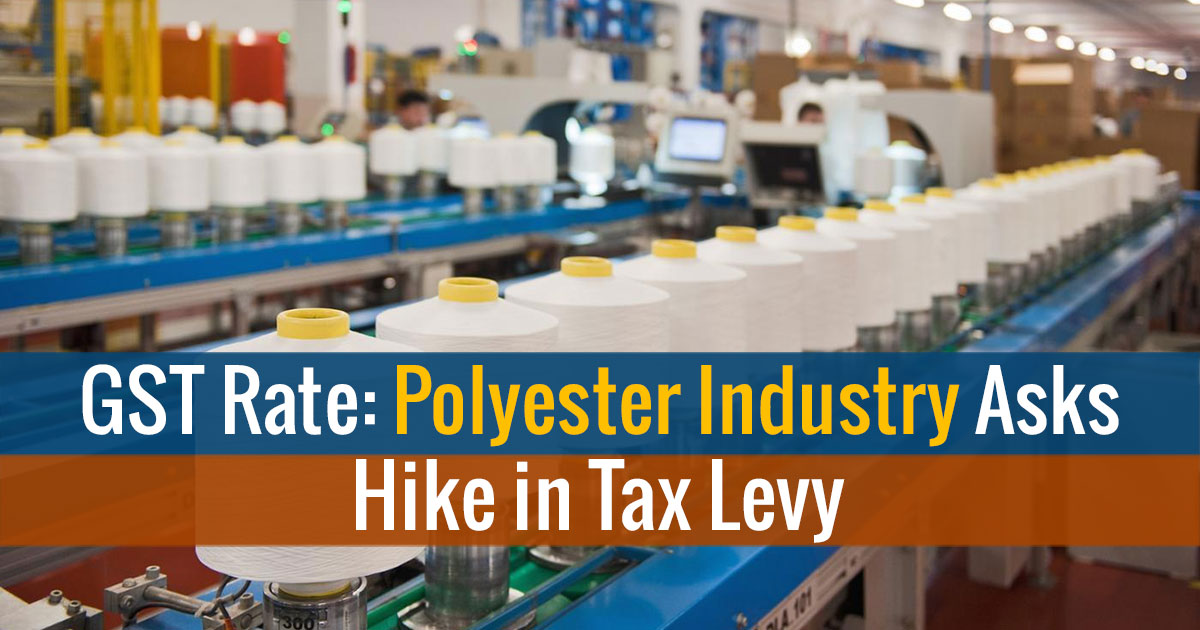In various cases of exemption-seeking from all the industrial and sectors for the purpose of saving some tax revenue continuing for a further investment in GST structure, here in case of adversity, the polyester sector was seen asking for a steady tax rate even after a certain relaxation can be layered on it.
After solar and wind control organizations demanded GST on their yield (power), a portion of the upstream textile industry has now requested 12% GST on the textiles and garments, while as basic goods, the most minimal GST rate of 5% looks likely on them.
The input tax credit (ITC) office, which will be the sign of the proposed goods and services tax (GST), has a few modern fragments pitching against their potential prohibition from the tax administration while some other requesting higher rates than proposed by the legislature.
As of now, characteristic strands — including cotton — don’t draw in any excise obligation, while a 12.5% excise obligation is collected on man-made filaments, for example, polyester. As per sources, many members of a partners’ meeting with the textile commissioner in Mumbai were shocked when the Synthetic and Rayon Textiles Export Promotion Council (SRTEPC) showed that 12% GST ought to be fine for the textile and garments industry.
A 4-6% value added tax (VAT) is forced by states on both man-made and normal strands. In any case, the sources recommended that a 12% tax frequency under the GST administration for the whole textile and article of clothing industry will profit just a not very many extensive man-made fiber organizations with an incorporated set-up.
Additionally, control organizations, especially the capital concentrated solar and wind vitality firms, need their yield (power) to be liable to GST, given their inputs are to be taxed in the GST administration: the reason: without yield tax risk and absence of clarity of whether input tax expenses are a go through, their expenses could rise. However, characteristic fiber-based textile players will be off guard if the tax rates go up.
Such firms can completely use the ITC office and likewise, as predominant players, it is less demanding for them to pass on the tax cost to downstream industries. Right now, the solar power gear is to a great extent excluded from roundabout taxes crosswise over states yet execution of GST would mean a conceivable 18% tax on them.
Additionally, not at all like thermal power organizations — for the most part, possessed by broadened corporate gatherings, most solar firms won’t have the capacity to balance the input tax costs against tax liabilities on yields other than power. The danger of cost increment in the GST administration exists for all power designers, including thermal power units, yet the issue is more genuine for solar and wind control firms, as for their situation, capital costs make up nearly the whole lump of the era cost and variable expenses are insignificant. With power liable to stay outside the ambit of GST, the organizations won’t have the capacity to balance the input taxes.
